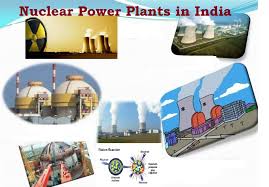
Breaking News
 How to Set Up An Email Alias - #SolutionsWatch
How to Set Up An Email Alias - #SolutionsWatch
 Theft of a Nation: How the Deep State Swamp Is Stealing the People's Power
Theft of a Nation: How the Deep State Swamp Is Stealing the People's Power
 As America Soul Searches, The Rest Of The West Is Falling Apart
As America Soul Searches, The Rest Of The West Is Falling Apart
Top Tech News
 'Robot skin' beats human reflexes, transforms grip with fabric-powered touch
'Robot skin' beats human reflexes, transforms grip with fabric-powered touch
 World's first nuclear fusion plant being built in US to power Microsoft data centers
World's first nuclear fusion plant being built in US to power Microsoft data centers
 The mitochondria are more than just the "powerhouse of the cell" – they initiate immune...
The mitochondria are more than just the "powerhouse of the cell" – they initiate immune...
 Historic Aviation Engine Advance to Unlock Hypersonic Mach 10 Planes
Historic Aviation Engine Advance to Unlock Hypersonic Mach 10 Planes
 OpenAI CEO Sam Altman Pitches Eyeball-Scanning World ID to Bankers
OpenAI CEO Sam Altman Pitches Eyeball-Scanning World ID to Bankers
 New 3D-printed titanium alloy is stronger and cheaper than ever before
New 3D-printed titanium alloy is stronger and cheaper than ever before
 What is Unitree's new $6,000 humanoid robot good for?
What is Unitree's new $6,000 humanoid robot good for?
 "No CGI, No AI, Pure Engineering": Watch Raw Footage Of 'Star Wars'-Style Speeder
"No CGI, No AI, Pure Engineering": Watch Raw Footage Of 'Star Wars'-Style Speeder
 NASA's X-59 'quiet' supersonic jet rolls out for its 1st test drive (video)
NASA's X-59 'quiet' supersonic jet rolls out for its 1st test drive (video)
 Hypersonic SABRE engine reignited in Invictus Mach 5 spaceplane
Hypersonic SABRE engine reignited in Invictus Mach 5 spaceplane
India Plans Fleet of 17 Additional Nuclear Reactors

Kamlesh said 17 nuclear power reactors are planned in addition to those already under construction.
Vyas noted the overall contribution of India's 22 operating reactors to the country's electrical grid is relatively small, at about 3%. This, he said, is due to the smaller capacity indigenously designed reactors built initially to gain experience in nuclear technology.
The Indian government is committed to growing its nuclear power capacity as part of its infrastructure development programme, and has seven units currently under construction. These are: four indigenously designed pressurised heavy water reactors (PWRs), two each at Kakrapar and Rajasthan; two Russian-designed VVER PWRs at Kudankulam; and an indigenously designed prototype fast breeder reactor at Kalpakkam.

 Red Alert in Reverse Repos
Red Alert in Reverse Repos

